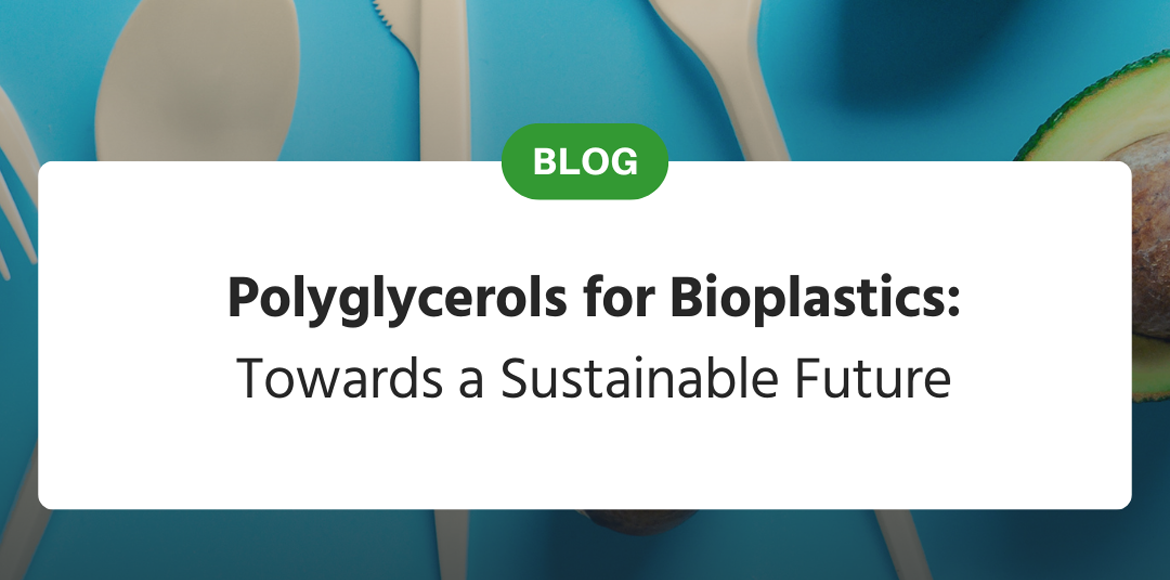@ Polyglycerols for Bioplastics
In recent years, polyglycerols have emerged as key components in the production of eco-friendly and biodegradable bioplastics.
In this context, the need for sustainable solutions to reduce the environmental impact of conventional plastics has led to a growing search for innovative materials.
What are Polyglycerols?
Polyglycerols are polymers obtained from the polymerisation of glycerol, a natural by-product of the production of biodiesel and vegetable oils. Thanks to their versatile chemical structure and their renewable origin, polyglycerols find application in numerous sectors, including the food and cosmetics industries.
Furthermore, their most promising application is in the field of bioplastics, where they offer a viable alternative to petroleum-based derivatives.
Polyglycerols for Bioplastics: a winning combination
Bioplastics made with polyglycerols have characteristics that make them ideal for replacing traditional plastics:
- Biodegradability: Bioplastics based on polyglycerols naturally decompose, reducing the issue of plastic pollution.
- Renewability: Derived from plant and sustainable sources, they contribute to reducing dependence on fossil fuels.
- Safety and environmental compatibility: Being non-toxic and free of harmful components, they can be used in food packaging and medical products without health risks.
Spiga Nord’s role in sustainabilityà
Spiga Nord, a leading producer of polyglycerols, is committed to research and development of innovative solutions for a more sustainable future.
Thanks to its experience in the sector, the company offers high-quality polyglycerols for the bioplastics industry, thereby contributing to the transition toward eco-friendly and low-impact materials.
Conclusions
The use of polyglycerols in bioplastics production represents a fundamental step towards a more sustainable future.
The combination of biodegradability, renewability and high performance makes these solutions ideal for reducing the environmental impact of conventional plastics.
Innovative companies like Spiga Nord are driving the growth of the bioplastics sector, offering concrete alternatives for a greener future.

